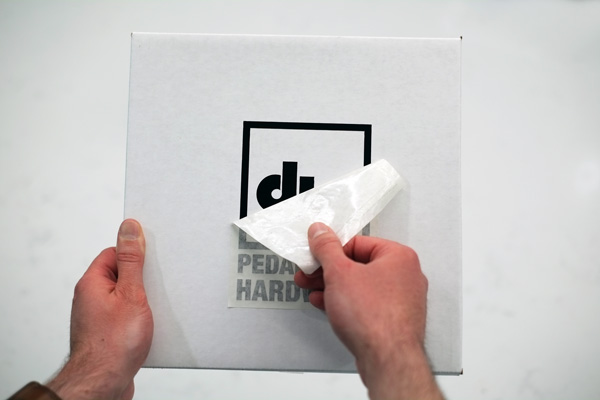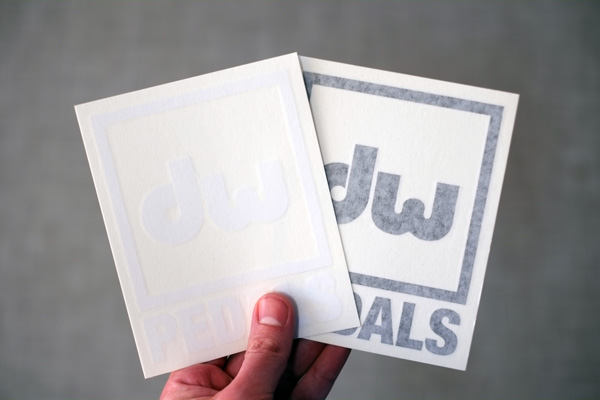In everyday language, the terms “decal” and “sticker” are often used interchangeably. While they share some similarities, it’s essential to understand the nuances that set them apart. In this section, we’ll delve into the true definition of decals and explore what makes them distinct from stickers.
What is the true definition of a decal?
According to Wikipedia, the term decal refers to a printed image on a substrate, such as plastic, paper, or cloth, that can be moved to another surface upon contact. The term “transfer” is a crucial component of the definition, highlighting the decal’s unique ability to move from one place to another.
In practical terms, a transfer decal takes the form of a vinyl cutout sticker. Its design is crafted on vinyl material, and to facilitate application, a transfer material is used, ensuring that the decal remains intact during the process. Additionally, transfer decals often come with a pre-mask, simplifying their application and ensuring a smooth transfer onto the desired surface.

What is a sticker?
Now that we have a clear understanding of decals, let’s explore the world of stickers and their diverse applications. A sticker, according to Wikipedia, is a type of label printed on paper, plastic, vinyl, or similar material. One side of the sticker is coated with temporary or permanent adhesive, allowing it to adhere to various surfaces.
Stickers, unlike decals, serve a myriad of purposes beyond decorative uses. They can be employed for functional tasks, such as organizing items, labeling products, or conveying important information. Additionally, stickers have gained popularity in the marketing world, serving as powerful tools for brand promotion and product awareness.
How are stickers and decals different?
Now that we’ve explored the definitions and applications of both decals and stickers, let’s summarize the key differences between the two.
Difference in materials and transferability
One of the primary distinctions lies in the materials used. Decals often feature vinyl as their primary medium, which contributes to their transferability. On the other hand, stickers are commonly crafted from paper, plastic, or vinyl, with varying levels of adhesiveness.
Versatility and Purpose
While both decals and stickers offer versatility, stickers excel in functional applications, serving as practical labels for various items. Decals, with their transferable nature, are more suitable for customization and creative expressions.
Longevity and Use Cases
Decals find their niche in long-term use cases, such as OEM equipment decals, where they need to endure environmental factors. Stickers, given their temporary adhesive nature, are often used for short-term purposes, such as promotional events or seasonal decorations.
What about labels vs decals? Are they the same?
A label and a decal are similar in that they are both adhesive materials used for various purposes, but they have some key differences. Labels are primarily used for providing information and may be attached directly to a product, package, or container to convey important details to consumers or users. Decals are typically used for decorative or branding purposes and are often employed on vehicles, windows, laptops, walls, and other surfaces where customization is desired.
How to Order Decals
Ordering decals can be a seamless experience when you know the right steps to follow. In this section, we’ll provide you with a hassle-free guide to ordering decals for your projects, whether it’s for business branding, personal expression, or any other creative endeavor. Let’s dive in and learn how to get the perfect decals tailored to your needs!
Select the Size: Tips for Finding the Correct Size
Choosing the right size for your decals is crucial to achieving the desired visual impact. Consider the surface where you plan to apply the decals and take accurate measurements. If you’re using the decals for branding or promotional purposes, opt for sizes that are easily noticeable and align well with your overall design.
Pick the Quantity and Checkout
Once you’ve settled on the size and design of your decals, it’s time to decide on the quantity that best fits your requirements. Consider factors like your budget, intended use, and any potential future needs. Ordering in bulk often results in cost savings, making it a great option for promotional materials or business branding. After finalizing your quantity, proceed to the checkout process, where you’ll enter your shipping and payment details. Double-check all the information before placing your order to ensure a smooth transaction.
Approve a PDF Proof
Before mass production begins, you’ll receive a PDF proof of your decal design from the provider. This step allows you to inspect the layout, colors, and overall appearance of the decals. Carefully review the proof, comparing it to your original vision. Pay close attention to any text, images, or logos to ensure accuracy. If you spot any discrepancies or have last-minute changes, communicate them promptly. Once you are satisfied with the proof, give your approval to proceed with production.
Production and Shipping
With your approval, the decal production process will commence. The production time for most orders is 5 business days, but may vary for very large and complex orders. You will receive a notification when your order is shipped, along with tracking information. Now, all that’s left is to eagerly await the arrival of your beautifully crafted decals at your doorstep.


